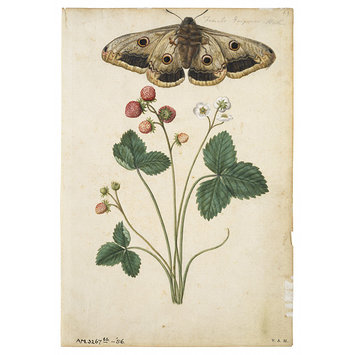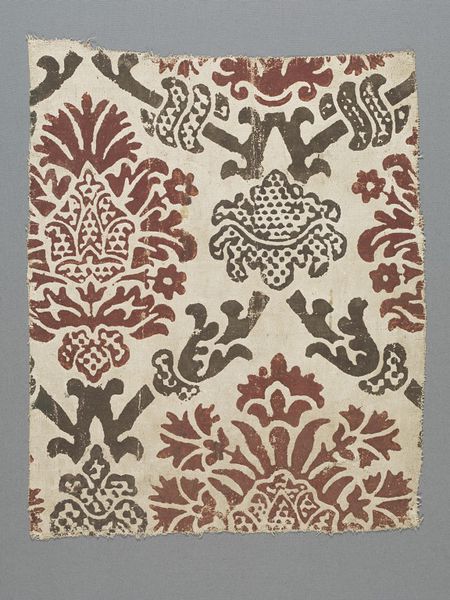I've got plenty of dreams, and not many goals, so looking for a deadline I signed up for the Italian Renaissance Costuming Challenge this year. I was originally going to go with another inspiration pieces, but my friend Fia is hosting a black and gold challenge (Artemisia's kingdom colors) with a deadline in October, so I decided to pick something that would work for both.
The fabric is, of course, the one major issue in what is otherwise a beautiful, but reasonably straightforward, gown. The fabric is arresting and take your breath away. It is symbolic and iconic. Since this is one of the dresses that most Italian costumers take a run at at some point, I had already been keeping my eye out for what the fabric options were. There's the version from
BonniePhantasm on Spoonflower that several costumers have been reasonably happy with. It is one of my backup plans but I wasn't real enamoured with it. I'm a tactile person and the best color and draping version of the fabric also happens to be the 100% polyester version. The other major option used by other seamstresses was the
Sartor version that was woven in silk. They sold out almost instantly, and if I wanted it, I'd just have to order 50 meters to have them do another run. I feel doofy for not buying it when everyone else did, but at the time I wasn't as interested in the dress. Since, well, everyone does this dress. In hindsite, I sort of smack myself in the forehead, but it is what it is. Back to the present. I not only can't afford to have 50 meters printed, I don't love the silk enough to do it. There's no texture to it and they went with a really light gold and a beige background so it seems sort of washed out. It doesn't grab me like the painting. I'm also worried what it would do to my coloring and just how ghostlike and weird I'd look in it.

After the exact pattern versions were crossed off I got into the sorta kinda close territory. (I know-- I was doing the but, but NOOOOOOO lower lip quiver too. But this was over the course of a couple of years so I had time to adjust.) I started scoping out damasks and brocades and velvets and any other search term I could think of. I'm a fabric hoarder. I mean shopper, Yes, shopper, that's it. So I look at fabric sites on a consistent basis. I had the Eleonora gown in the back of my mind and kept an eye out for something that might work. Robert Allen has a cut velvet that has the same sort of feel to it called
Jeu De Balle. It is a 75% rayon 25% polyester with a nice drape. I have samples and it doesn't feel at all plasticy. I have sewn with several Robert Allen home dec fabrics and always been happy with them. I wasn't as happy with the $160+ a yard msrp, but I did find a remnant of about 4.5 yards for under $100. If I could possibly have gotten the trained dress out of that much fabric, I would have gone that direction.
I was reading Joe Thomas' article "Fabric and Dress in Bronzino's Portrait of Eleonor of Toledo and Her Son Giovanni," and he refers to a type of fabric Florence was known for called
ferroneire because of its resemblance to ironwork. There were several other strapwork fabrics I considered because of that. Speaking of the article, that was one of the few things I took from it. Thomas fixates on the early 19th century assertion that Eleonora's burial dress is the same one from the painting and thus takes the statement that the burial dress is a satin with galloon trim in concert with the statement that it is the Bronzino dress and asserts that the fabric must be a satin with with floating wefts. Since the burial dress, as examined in excruciating detail by Janet Arnold with the conservation documented in a couple of hundred photographs on the Medici Archive for public view, is blatantly not a woven pattern, has embroidered bands of decoration, and was probably originally a green silk, the paper has some major flaws. (I'll come back to all those nifty photographs when I talk about patterning this thing. There's a picture of Janet wearing the muslin toile she made of the dress that makes me smile a lot.)
So, back to trying to decide if I should sell one of my children to finance large fabric purchases, discarding using a fabric that was close and picking something else, or just picking a different dress to do. I have bunches of other fabrics I could pull from stash. If I want to still do the black and gold themed thing I've got several bolt black cotton velvet. Or there's the 60 yards of black and gold ecclesiastical brocade I got in a killer deal. Then inspiration hit.
 |
| Object 09.50.1096 from The Met |
I block print fabrics for fun.

There are several examples of Italian and Spanish block printed fabrics from the 16th Century. Like this one at the Met.
And this one. This one in LACMA isn't as detailed, but it is also 16th century and Florentine.
I can make my own fabric! And it won't take forever and ever. I have a machine embroidery machine and the files to embroider the motifs are available from
Etsy from Liuba at ArtEmbroideryDesign, so I considered that for a few minutes. Only a couple of minutes. Then I decided that would probably take all 4 months of the challenge since I have a smaller machine and it would make me crazy. And I couldn't even get an A&S project out of it. Not that block printing it will be super simple. There will be a reasonable challenge to get the registration correct for both placement and to accomplish the two clear colors and I've never carved blocks as large as the ones I'll need, but IRCC is all about challenge, right?
Now I have to decide if I want to gild the gold for my fabric. Or maybe try to do some flocking. There are examples of dimensional fabrics made by stamping with glue and then sprinkling it with wool fibers from the manufacturing of wool cloths. There are also some furnishing fabrics that used mica for color and sparkle. I'll post some of those examples in tomorrow's post (I'm going to try my traditional IRCC plan of posting daily and so am saving myself something to talk about.) Let the dreaming begin!
 I did do one Eleonora dress activity. Mathew Gnagy (The Modern Maker) published his 16th Century Woolen Stocking Knitting Pattern today. I have wanted to do the Eleonora stockings ever since IRCC I but I am not an expert knitter and the prospect of doing the 20+ stitches per inch has freaked me out. I've been practicing. I even got as far as swatching on 0000 needles. Swatching and panicking. I'm so unbearably slow at it. I knew I could do a plain pair of stockings with a modern heel in a lower gauge but have been hesitating. I bought the pattern and he included a much simplified version of the Eleonora stocking with a patterned band that looks similar to the top of the band on the burial socks, but not the wide cuff with eyelets. It does have the decorative stitches down the back. It also includes shaping for the bottom of the foot and heel more in line with extant stockings. It has enough of the feel of the stockings to make me happy, but I think they are much more achievable with my current knitting skills in the time allotted. I do need to get different yarn as my silk is much lighter than the sock yarn this is patterned for.
I did do one Eleonora dress activity. Mathew Gnagy (The Modern Maker) published his 16th Century Woolen Stocking Knitting Pattern today. I have wanted to do the Eleonora stockings ever since IRCC I but I am not an expert knitter and the prospect of doing the 20+ stitches per inch has freaked me out. I've been practicing. I even got as far as swatching on 0000 needles. Swatching and panicking. I'm so unbearably slow at it. I knew I could do a plain pair of stockings with a modern heel in a lower gauge but have been hesitating. I bought the pattern and he included a much simplified version of the Eleonora stocking with a patterned band that looks similar to the top of the band on the burial socks, but not the wide cuff with eyelets. It does have the decorative stitches down the back. It also includes shaping for the bottom of the foot and heel more in line with extant stockings. It has enough of the feel of the stockings to make me happy, but I think they are much more achievable with my current knitting skills in the time allotted. I do need to get different yarn as my silk is much lighter than the sock yarn this is patterned for.
























_de'_Medici.jpg)





















